How to Make a Subway Map with John Tauranac
Hear from an author and map designer who has been creating maps of the NYC subway, officially and unofficially, for over forty years!


This week, The Museum of the City of New York is debuting a museum exhibition about museums. Cultivating Culture: 34 Institutions That Changed New York highlights the history of all thirty-four museums, spread throughout the five boroughs, that make up New York City’s Cultural Institutions Group. The Cultural Institutions Group is a public-private initiative established in the 19th-century to support the city’s cultural institutions with public investments. Members of the group range from renowned institutions like the Metropolitan Museum of Art to more local institutions like Flushing Town Hall. The artifacts in the exhibit have been mined from the collection of the Museum of the City of New York as well as the collections of the featured institutions. These objects, most of which are on public display for the first time, along with photographs taken at various points in history, represent each institution’s founding, mission, and future goals.
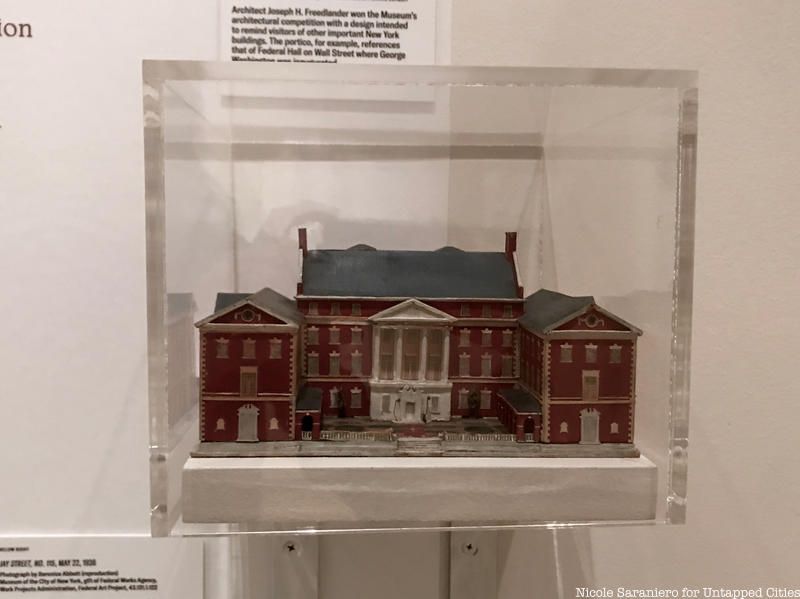
Representing the Museum of the City of New York there is a miniature model of the museum that was designed and created by architect Joseph H. Freedlander in 1936. Freedlander wanted the museum to resemble other important buildings in New York City such as Federal Hall, where George Washington was inaugurated. Throughout the third floor exhibit, visitors will find all manner of fascinating items such as a signed copy of the 1870 charter of The Metropolitan Museum of Art, the visitor’s log from Opening Day at the Brooklyn Museum, and an invitation to the opening of the American Museum of Natural History. The museum will be accompanied by public programs and a fun scavenger hunt. Guests can purchase a special #CultivatingCulture tote bag emblazoned with a list of the thirty-four CIG institutions, and a mini-Sharpie pen to mark off each site as you visit them. We’ve picked ten of the most interesting items you will find in the new exhibit. Cultivating Culture opens this Friday, October 18th, and runs through Sunday, February 9, 2020.
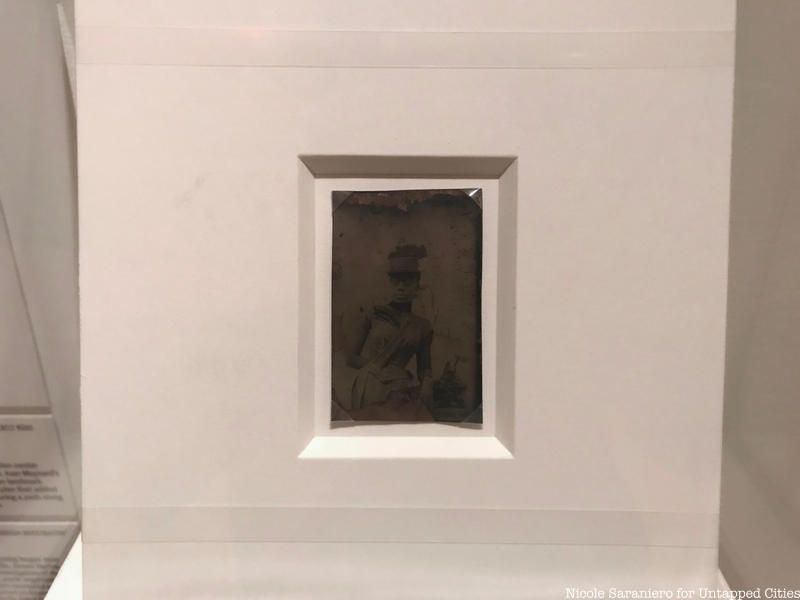
The iconic “Weeksville Lady” has become a symbol of The Society for the Preservation of Weeksville and Bedford-Stuyvesant History, the organization which landmarked, purchased and renovated the houses that now make up the Weeksville Heritage Center, a historic community in Crown Heights, Brooklyn. The portrait was discovered behind the mantel of a home near near Troy and Dean Streets just before it was going to be torn down in 1968. The portrait was taken sometime around the year 1880 and the identity of the female subject is unknown.
Weeksville Heritage Center is in the process of becoming the newest member of the Cultural Institutions Group, the first to join in the past ten years. Becoming a part of the Cultural Institutions Group will help the Center continue to share the history of Weeksville through the preservation of its four historic wood-frame houses, oral histories, photographs, genealogies, documents, and educational and cultural arts programming.
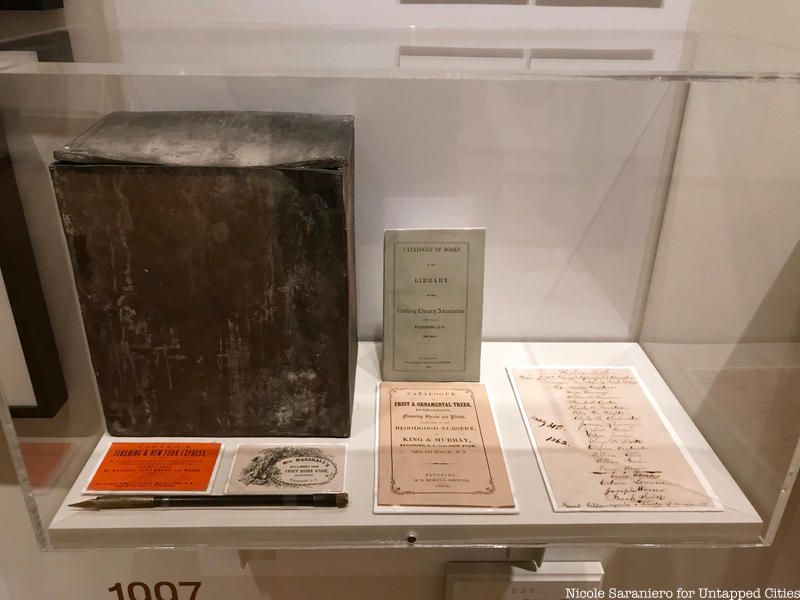
The cornerstone for Flushing Town Hall, a site that has served as a municipal building, a bank, a library, and a Police Station, was laid in 1862. Buried inside the stone was a time capsule created by the residents of Flushing. The time capsule was discovered during renovations in 1962.
Inside the metal box there were buttons, coins, a Bible, newspaper clippings, business cards, a history of Flushing and more items. On display at this exhibition you can see a library catalog, a pen, a ticket to the Flushing – New York Express ferry, and more documents from more than 150 years ago, which are in surprisingly good condition.
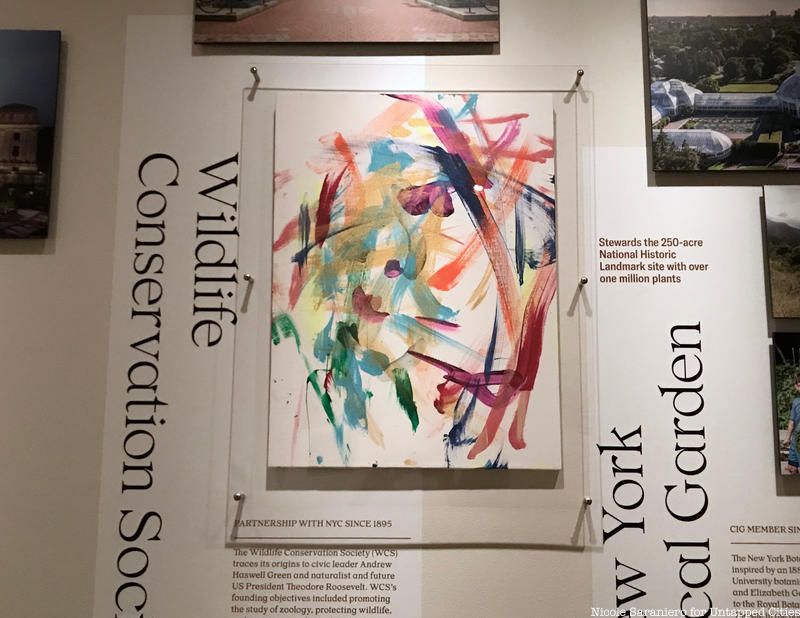
The Cultural Institutions Group is made up of a variety of institutions that preserve both cultural and natural histories, including the Wildlife Conservation Society which encompasses the New York Aquarium and the Bronx Zoo. Representing the Society in this exhibition is a colorful abstract painting created by sea lions.
Painting became an activity for sea lions at the Zoo in 2009, when it was introduced as part of the Animal Enrichment Program. The practice has continued as more sea lions learned the skill over the years. Sea lion art has been displayed at many events in the past such as the Bronx Zoo’s Boogie Down.
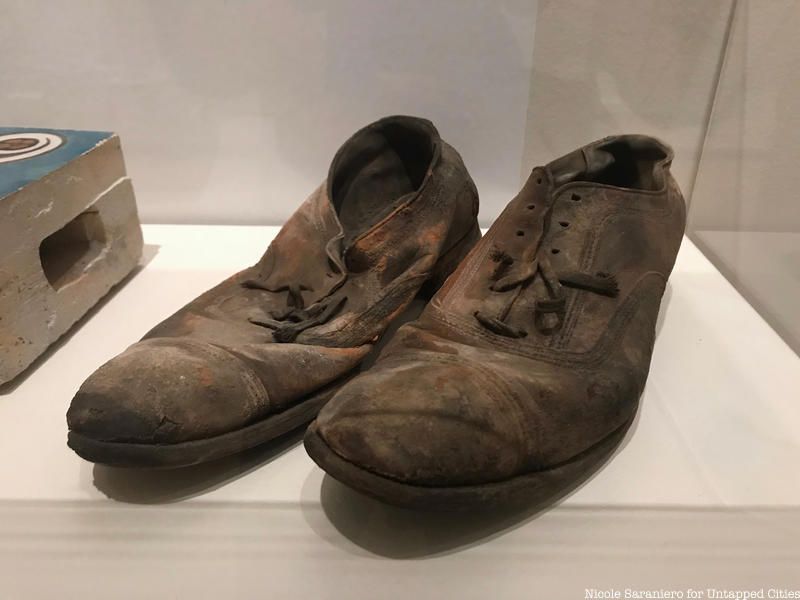
When renovations on the ceiling of New York City Center were recently carried out, a surprising discovery was made. Within the walls of the Neo-Moorish theater designed by architect Harry P. Knowles, workers found a pair of shoes that date back to the 1920s.
When the building was originally constructed, it was built for the ancient Order of the Mystic Shrine. Workers building the structure stuffed objects in the walls to keep evil spirits away. In 1943, it re-opened as New York City Center, Manhattan’s first performing arts center.
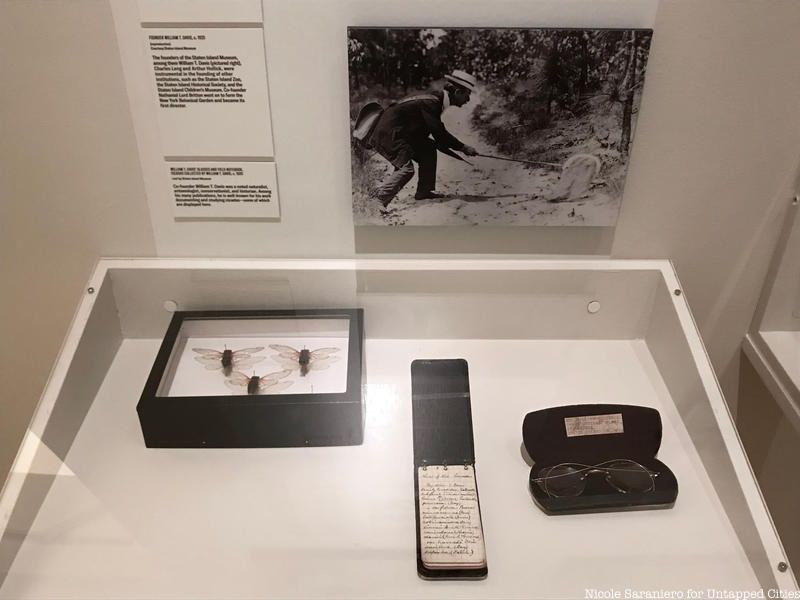
Though the Staten Island Museum just opened its newest location on the grounds of Snug Harbor Cultural Center & Botanical Garden in 2015, its roots stretch all the way back to 1881. The museum boasts an important collection of natural specimen and historic artifacts, including a mastodon tooth, and the largest collection of cicadas in North America. You can see a few of them in this exhibition.
The cicadas are accompanied by the field notes and spectacles of William T. Davis, one of the founders of the Staten Island Museum. Davis was a naturalist, entomologist, conservationist and historian who was know for his work documenting and studying cicadas.
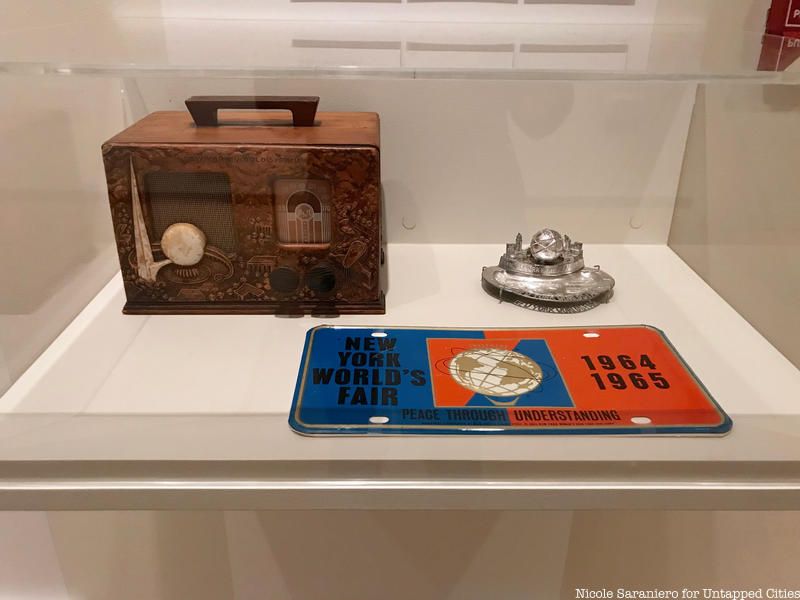
Several of the institutions within the Cultural Institutions Group came into being because of New York City’s two World’s Fairs, both in 1939 and 1964. One of those institutions is the Queens Museum. Constructed as the New York City Building for the 1939 fair, the Queens Museum structure was used for the same purpose again in 1964.
The Museum’s is known for being the home of the giant Panorama of the City of New York, but inside its collections there thousands of souvenirs from both fairs. In the Museum of the City of New York exhibit, you can see a radio from 1939 with the Trylon and Perisphere and an ashtray from 1964 with the Unisphere as well as a vanity plate that notes the theme of the fair, “Peace through Understanding.”
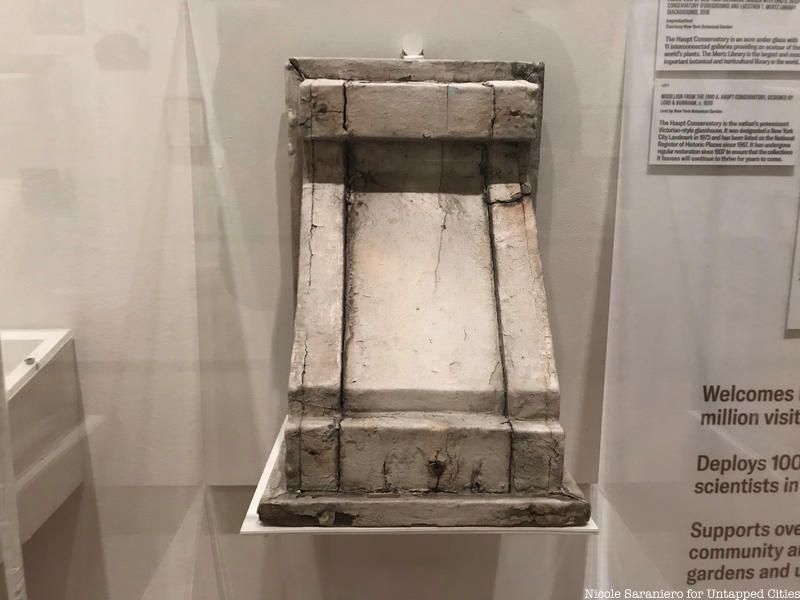
The Enid A. Haupt Conservatory of the New York Botanical Garden is a New York City Landmark that was constructed at the end of the 19th-century. The elegant Victorian conservatory was designed by Lord & Burnham and houses eleven interconnected galleries over the space of one acre.
On display in Cultivating Culture there is a piece of the conservatory structure, a modillion that dates to around 1899. Since 1937, the conservatory has undergone several restoration projects to keep it in top shape. Currently, the dome is undergoing routine maintenance.
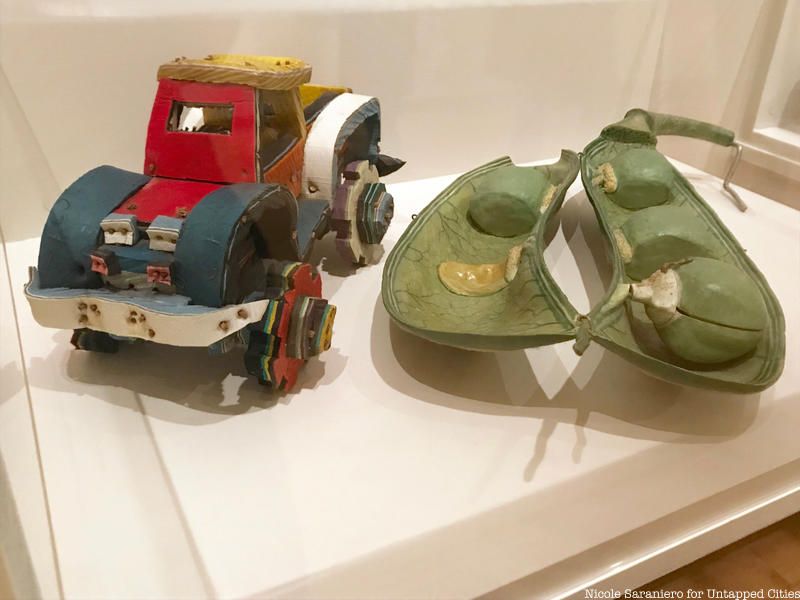
When the Brooklyn Children’s Museum was established in 1899 it was the first children’s museum in the world and it continues to be New York City’s largest institution designed for families. The museum is represented in this exhibition by two colorful toys, a truck and a giant pea pod which dates to the museum’s founding.
The giant paper mache pea pod was part of the museum’s original collection. It was displayed in the Botany room. The truck is from Liberia, Africa and was made by the Loma people.
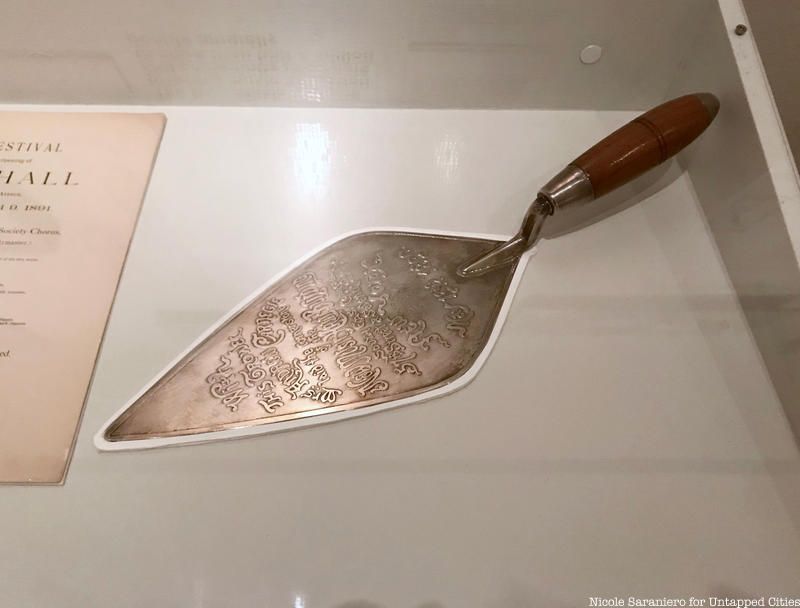
When Louise Carnegie laid the cornerstone of Carnegie Hall in 1890 she used a silver trowel designed by Tiffany and Co.. In honor of the 100th anniversary of the concert hall, a reproduction of that trowel was made, again by Tiffany’s. The anniversary trowel is on display at the Museum of the City of New York while the original is at the Carnegie Birthplace Museum.
The trowel is decorated with curvy flourishes and an inscription that reads “With this trowel Mrs. Andrew Carnegie laid the cornerstone of the new Music Hall Building Southeast Corner 57th Street & Seventh Avenue New York, New York 1890.”
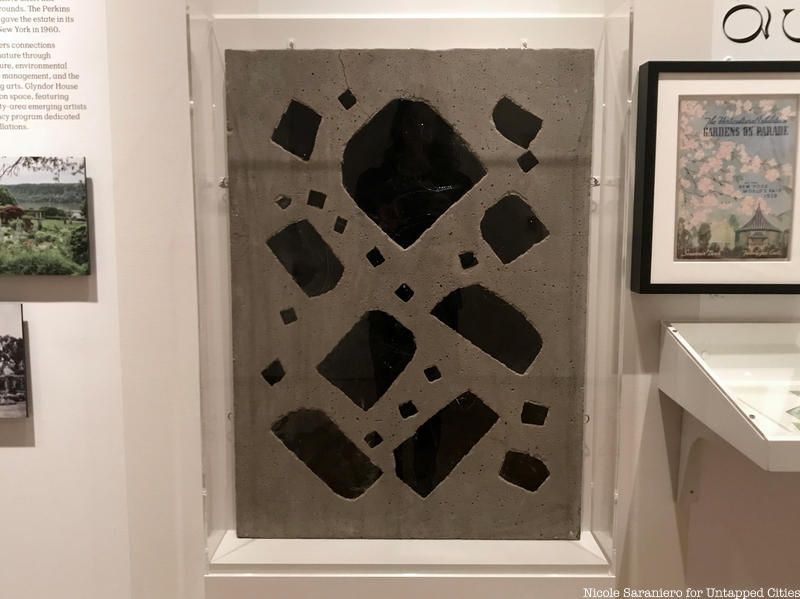
One of the most distinctive characteristics of the New York Hall of Science, another structure we have thanks to the World’s Fair, is the undulating facade of its Great Hall. Designed by Wallace K. Harrison for the 1964 World’s Fair, the Museum’s facade is covered with panels of concrete embedded with stained glass.
In total, there are 5,400, two by three foot panels. One of them up close in this exhibition. This architectural feature is called “Dalle de verre,” or glass slab, and was used by Harrison in some of the other buildings he designed.
Next, check out The Top 12 Secrets of NYC’s Museum of Natural History and The Top 10 Secrets of the Metropolitan Museum of Art
Subscribe to our newsletter